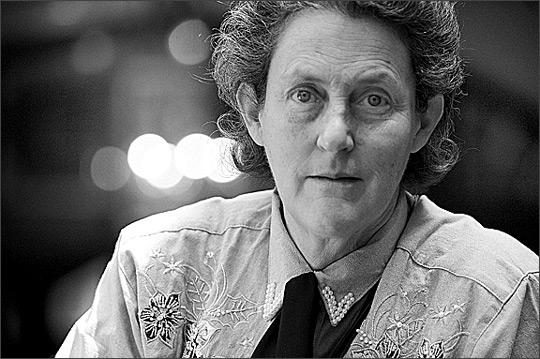| Seeing in Beautiful, Precise Pictures “Some people might think if I could snap my fingers I'd choose to be 'normal.' But, I wouldn't want to give up my ability to see in beautiful, precise pictures.”
Morning Edition, August 14, 2006 • Because I have autism, I live by concrete rules instead of abstract beliefs. And because I have autism, I think in pictures and sounds. I don't have the ability to process abstract thought the way that you do. Here's how my brain works: It's like the search engine Google for images. If you say the word "love" to me, I'll surf the Internet inside my brain. Then, a series of images pops into my head. What I'll see, for example, is a picture of a mother horse with a foal, or I think of "Herbie the Lovebug," scenes from the movie Love Story or the Beatles song, "Love, love, love..." When I was a child, my parents taught me the difference between good and bad behavior by showing me specific examples. My mother told me that you don’t hit other kids because you would not like it if they hit you. That makes sense. But if my mother told me to be "nice" to someone, it was too vague for me to comprehend. But if she said that being nice meant delivering daffodils to a next-door neighbor, that I could understand. I built a library of experiences that I could refer to when I was in a new situation. That way, when I confronted something unfamiliar, I could draw on the information in my homemade library and come up with an appropriate way to behave in a new and strange situation. When I was in my 20s, I thought a lot about the meaning of life. At the time, I was getting started in my career, designing more humane facilities for animals at ranches and slaughterhouses. Many people would think that to even work at a slaughterhouse would be inhumane, but they forget that every human and animal eventually dies. In my mind, I had a picture of a way to make that dying as peaceful as possible. I believe that doing practical things can make the world a better place. And one of the features of being autistic is that I’m good at synthesizing lots of information and creating systems out of it. When I was creating my first corral back in the 1970s, I went to 50 different feedlots and ranches in Arizona and Texas and helped them work cattle. In my mind, I cataloged the parts of each facility that worked effectively and assembled them into an ideal new system. I get great satisfaction when a rancher tells me that my corral design helps cattle move through it quietly and easily. When cattle stay calm, it means they are not scared. And that makes me feel I’ve accomplished something important. Some
people might think if I could snap my fingers I'd choose to be "normal."
But I wouldn't want to give up my ability to see in beautiful, precise
pictures. I believe in them. |
